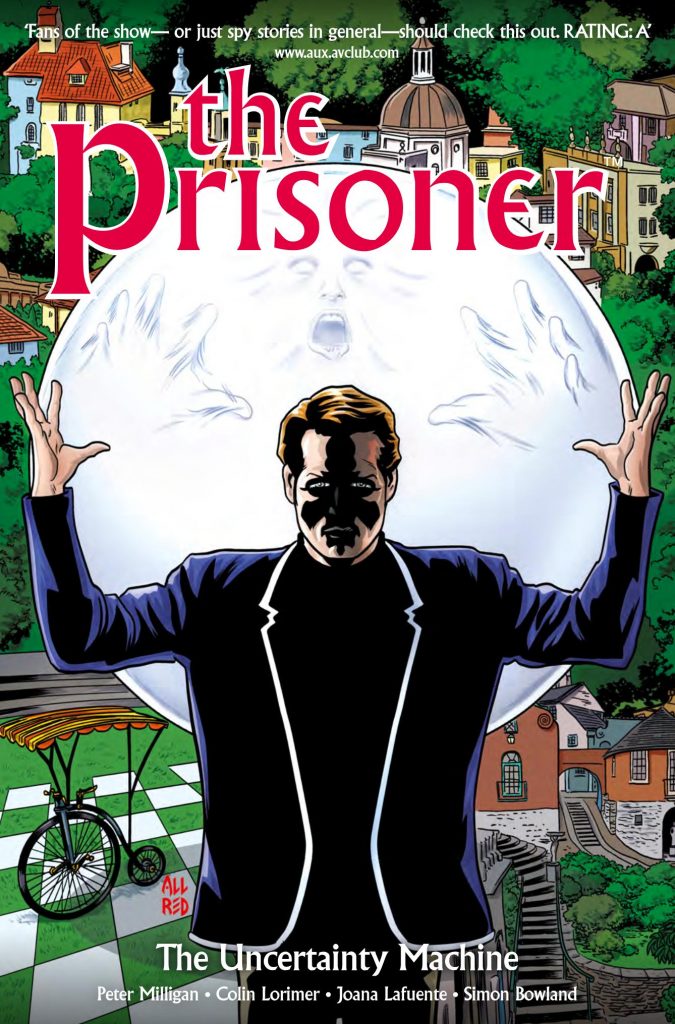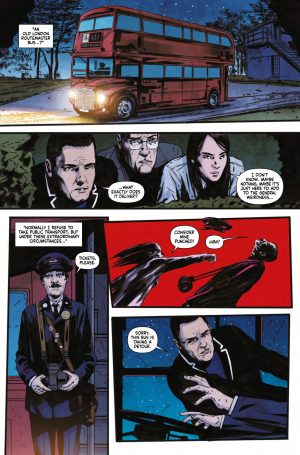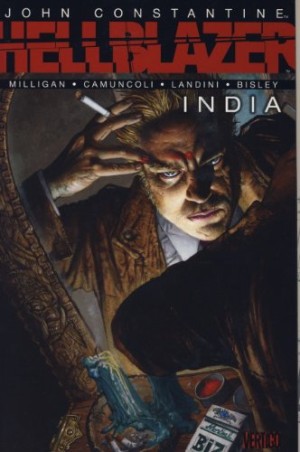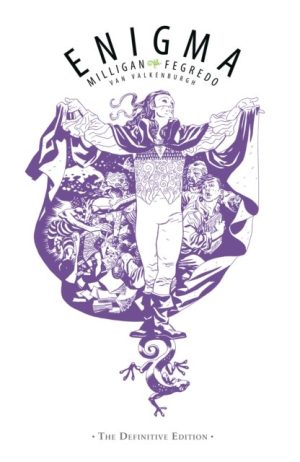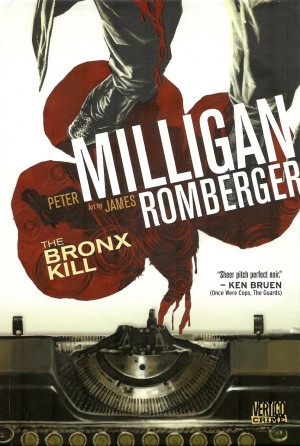Review by Frank Plowright
By the time Peter Milligan began working on a second published Prisoner graphic novel the TV show on which it was based had passed its fiftieth birthday. Yet as proved, the deliberately cultivated timelessness of The Prisoner’s original incarnation is a sustainable concept for a 21st century story also.
Milligan works from a plot supplied by editor David Leach, of an MI5 agent on a mission, abducted and taken to the Village, the peculiar venue used for extracting information. An early twist supplied is that the Village is run by an autonomous organisation who trade in secrets, an interesting update in an era when information, almost any information, has a greater currency than at any time in history. Those running the Village have updated their techniques to take advanced technology into account. Why have a giant white balloon chase people down the beach when you can ensure their permanence by implanting a combination of tracking device and remotely triggered bomb inside them? Don’t worry, the rovers, those inflatable highlights of the TV show, do make an appearance.
Both plot and script reinforce the mood cultivated by The Prisoner, adding an entirely new layer to the doublespeak of spies. No-one can be taken at face value, what they say may not be what they mean, and there are all sorts of tools and techniques available to defy free will. Milligan is an old hand at scripts toying with reality via manifesting confusion and misdirection, themes associated with many of his more personal projects, so his appointment is a perfect match, and his writing accomplished. He doesn’t depart too far from formula, because after all, there’s a substantial following for the concept, so a substantial market to be appeased, and key to his deliberations is that the Village is a state of mind.
It’s a glorious state of mind as envisaged by Colin Lorimer. He isn’t shackled by having to work with actor likenesses, but puts in the hours to make the real life Portmeirion location sparkle and to ensure every character is distinct and recognisable. His versions of ephemera both old and new have a nostalgic weight, and he plays well with the iconography of the TV show.
In 2010 there was a largely disappointing attempt to revisit The Prisoner as a TV series, respectful to the past, but unable to capture the original vision supplied by Patrick McGoohan. The Uncertainty Machine tops it on all counts, constantly toying with perception and paying off with an ending explaining the title and, if you want, the entire series. Whether Leach or Milligan was responsible, it’s a great idea, and cements a consistently entertaining read.
